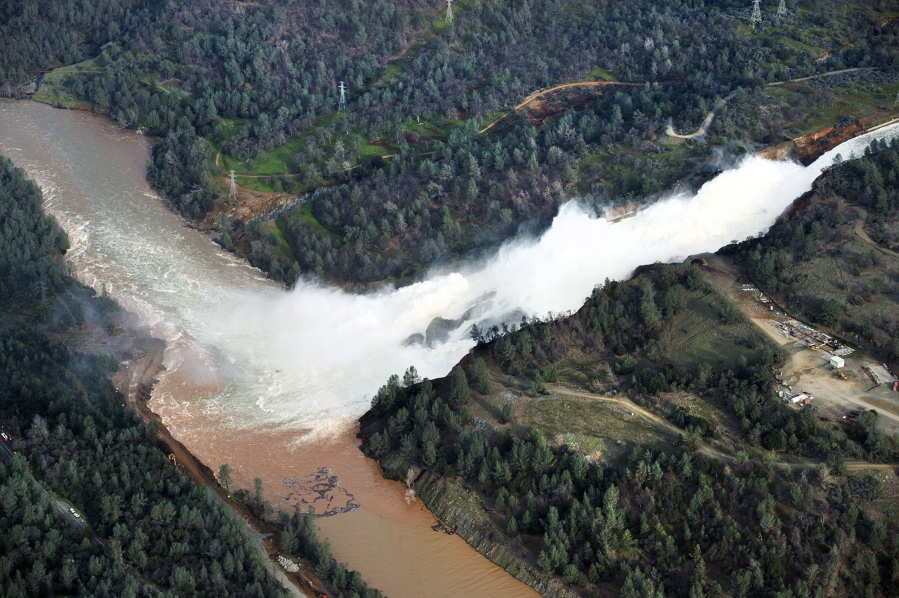OROVILLE, Calif. — Nearly 200,000 people who were ordered to leave their homes out of fear that a spillway could collapse may not be able to return until the barrier at the nation’s tallest dam is repaired, a sheriff said Monday.
The sheriff of California’s Butte County, Kory Honea, did not say how long the fixes could take and offered no timetable for lifting the evacuation order. Officials from the state Department of Water Resources were considering using helicopters to drop loads of rock on the eroded spillway at Lake Oroville, about 150 miles northeast of San Francisco.
Meanwhile, the water level behind the dam dropped, easing slightly the fears of a catastrophic spillway collapse. But with more rain expected later in the week, time was running short to fix the damage ahead of the storms.
A day earlier, authorities ordered mass evacuations for everyone living below the lake out of concern that the spillway could fail and send a 30-foot wall of water roaring downstream.



